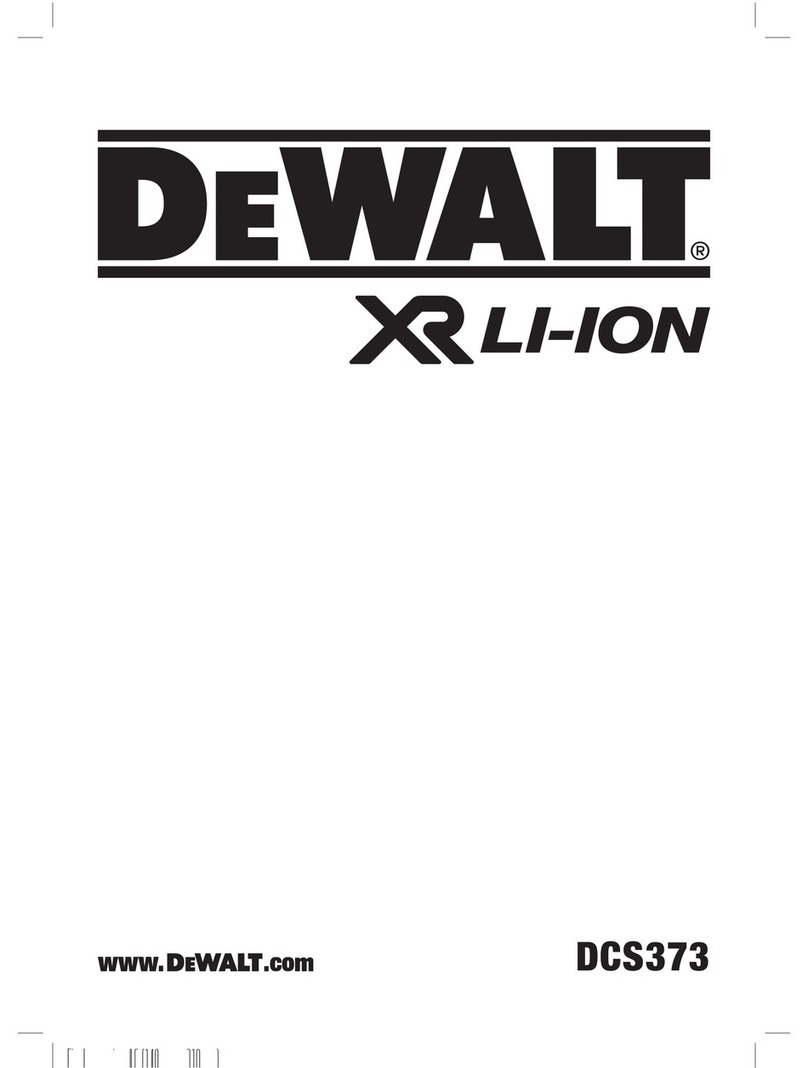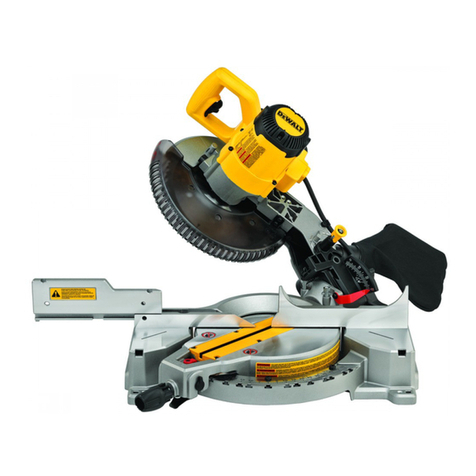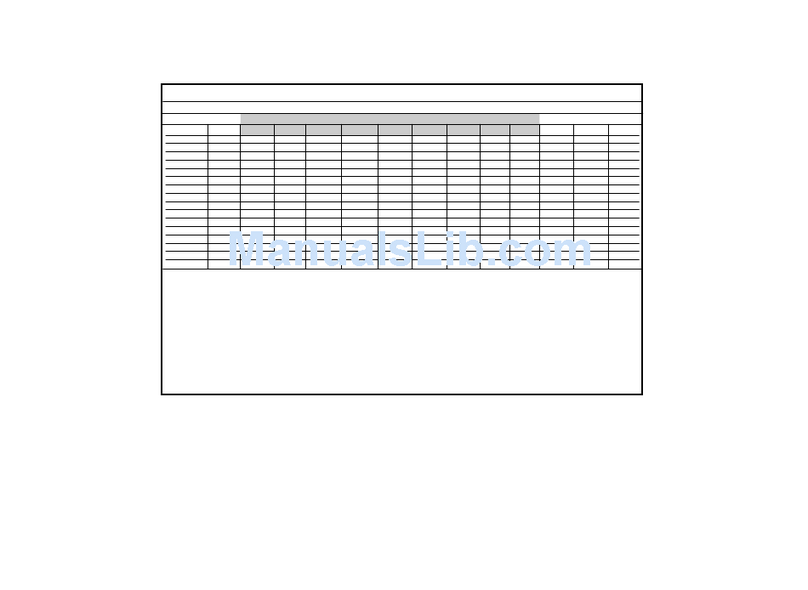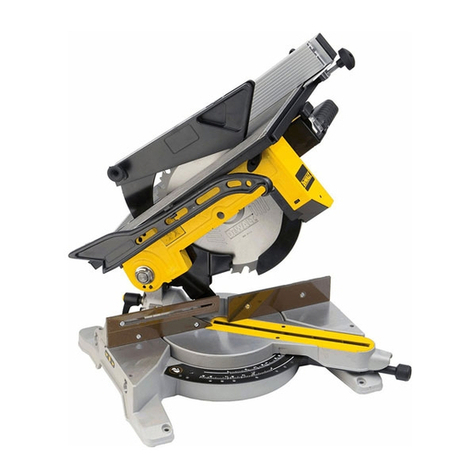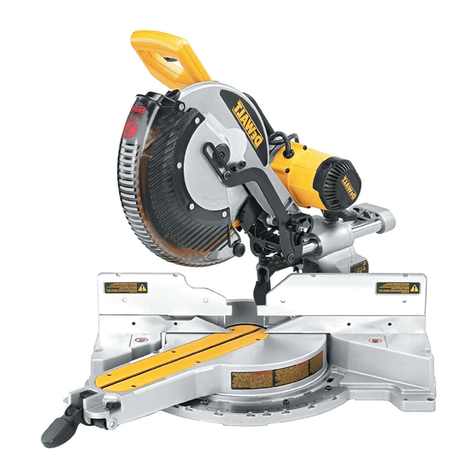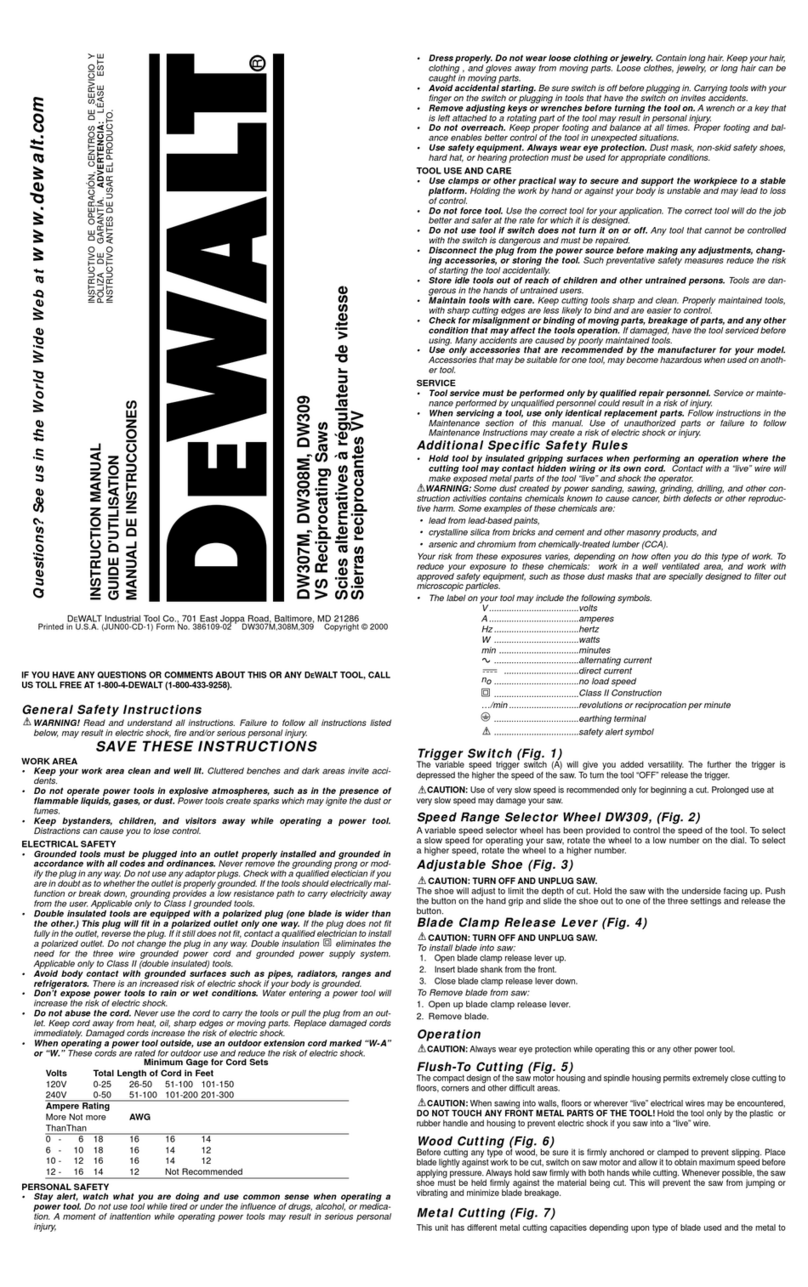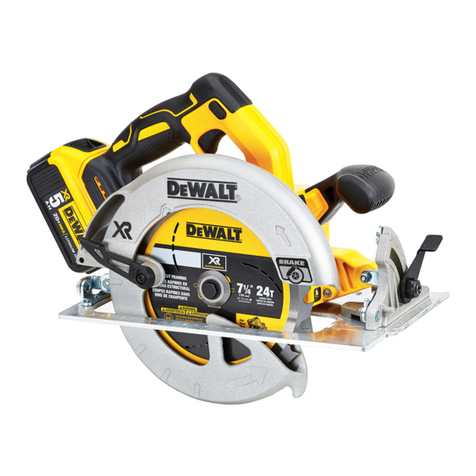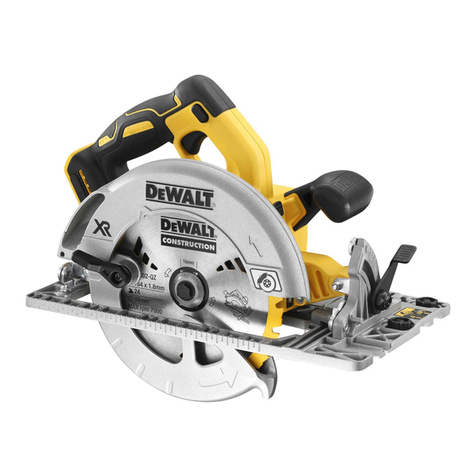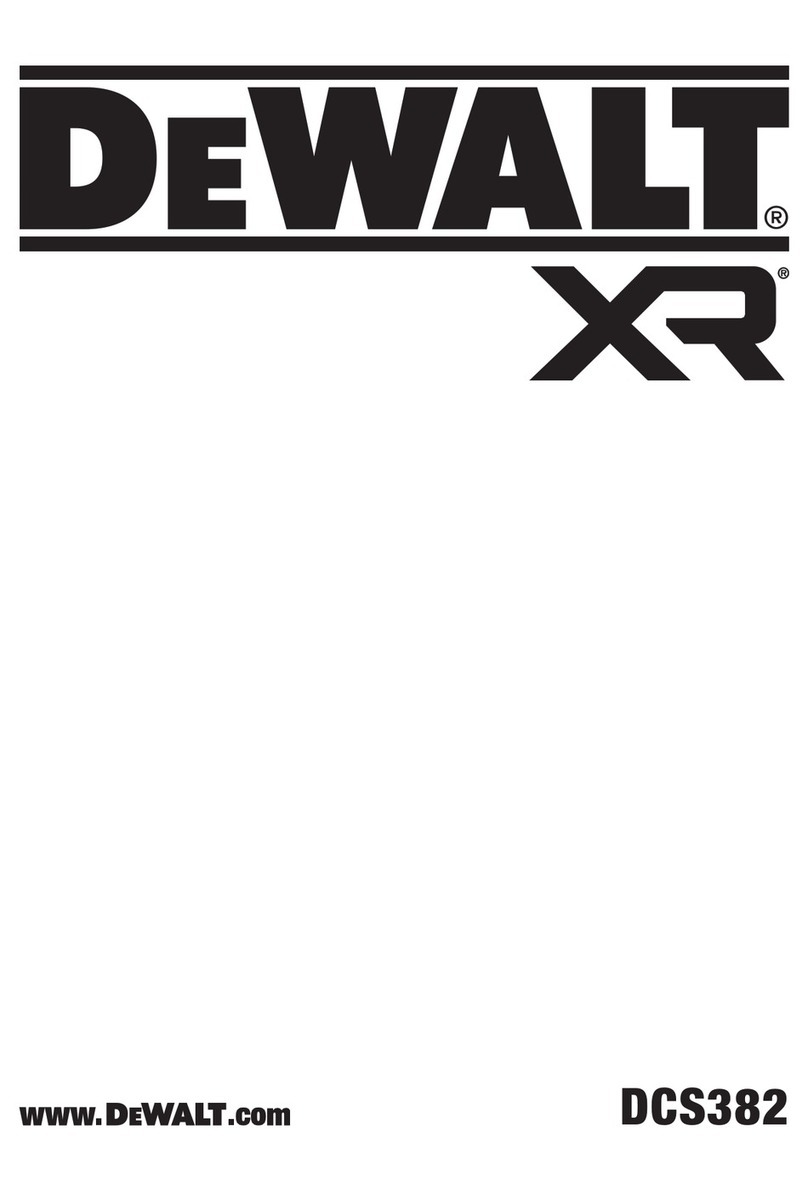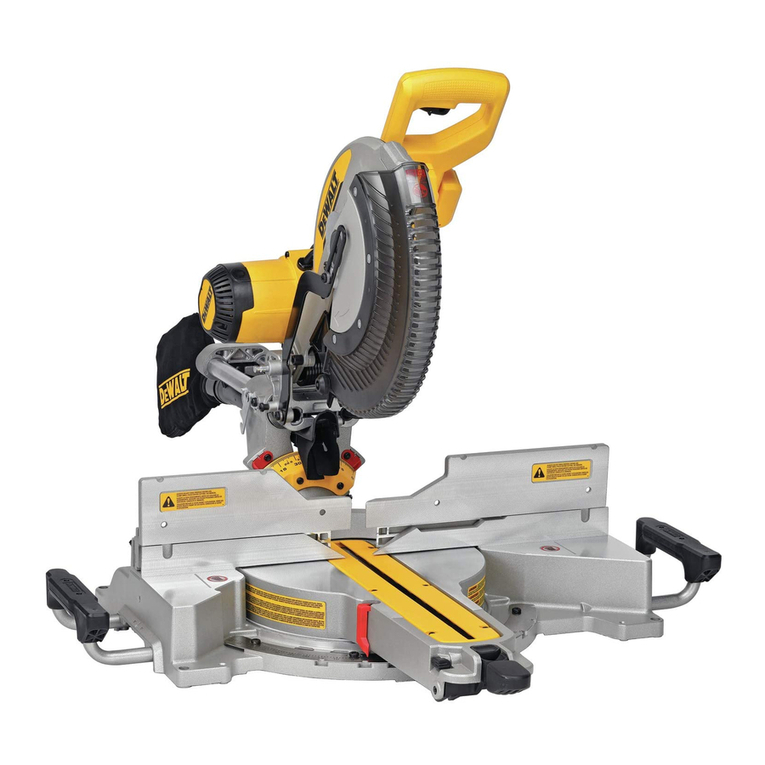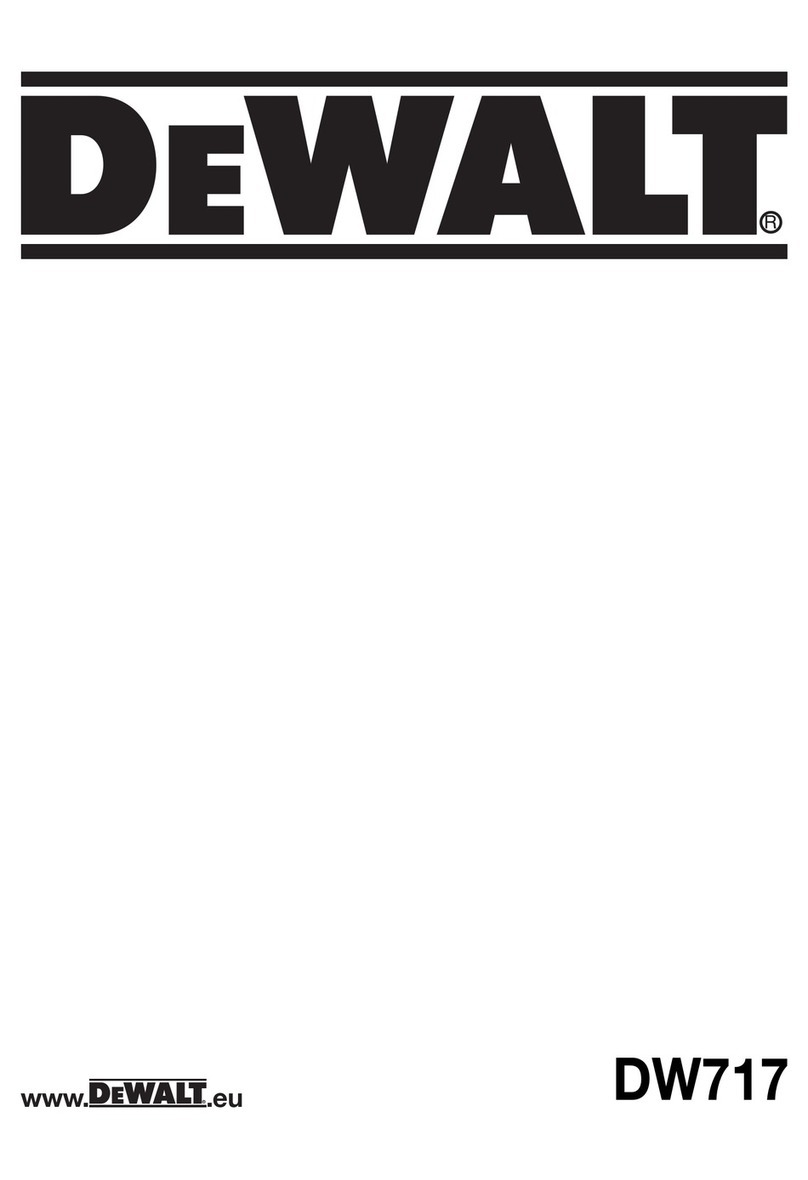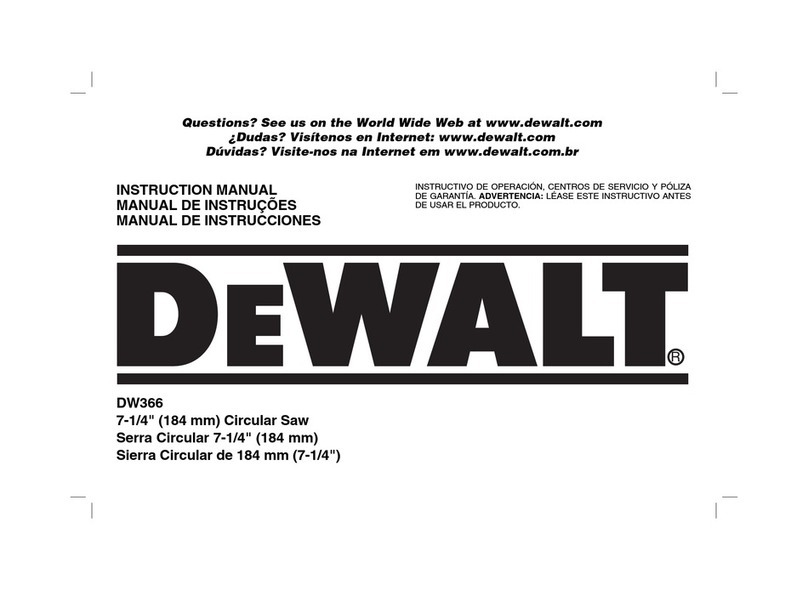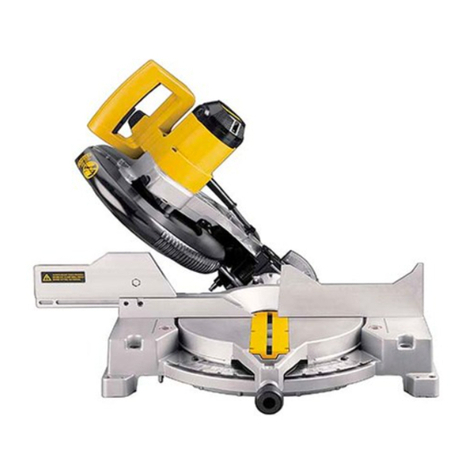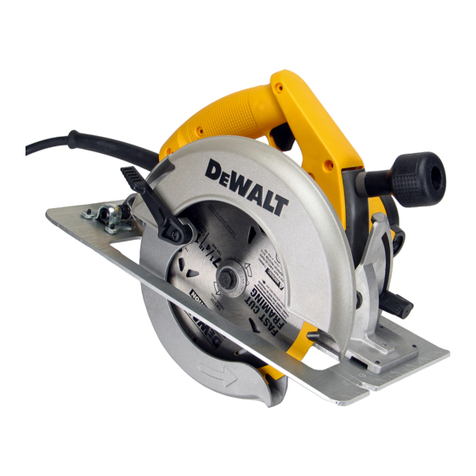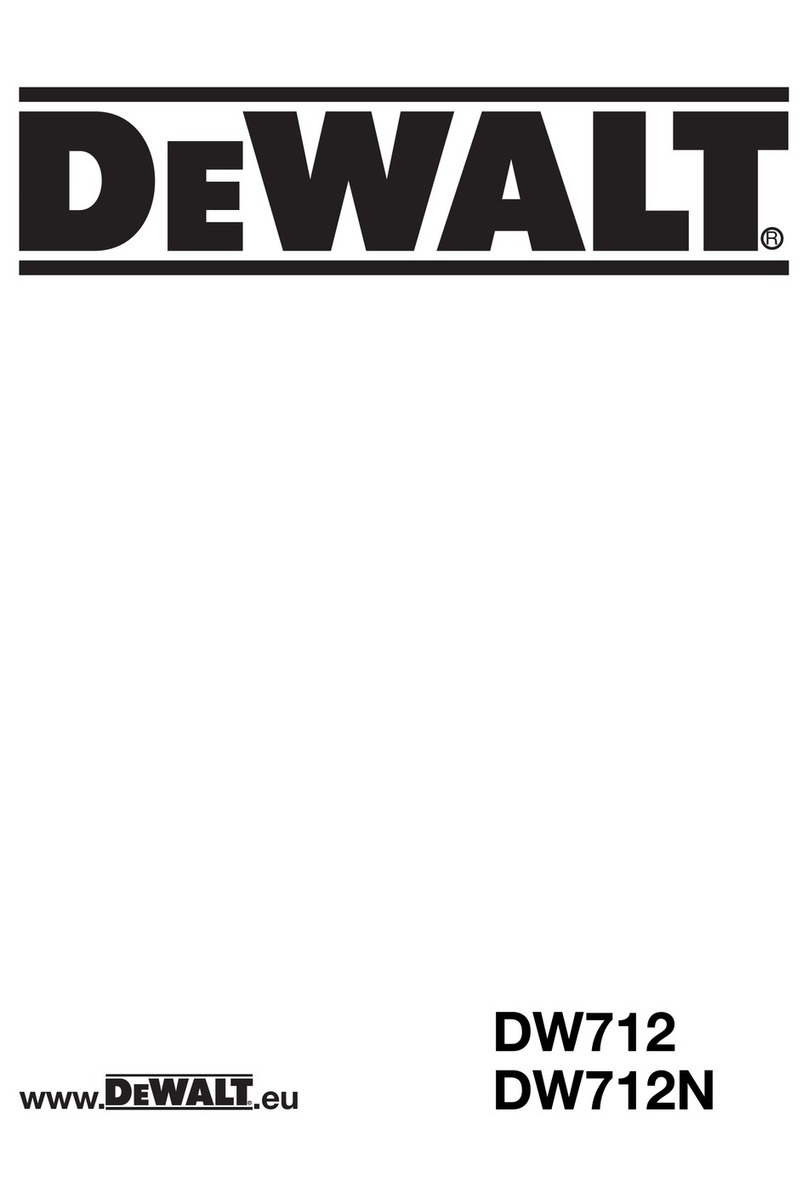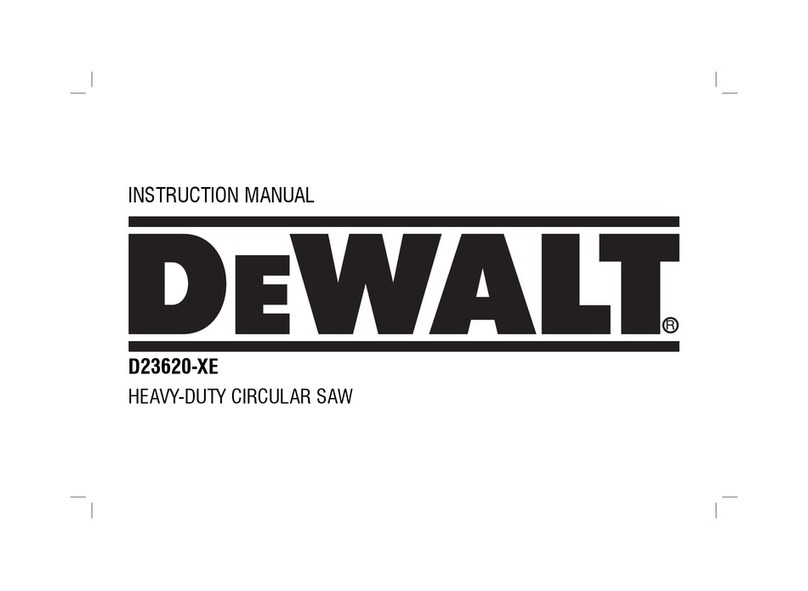
8
ENGLISH
Congratulations!
You have chosen a
tool. Years of experience, thorough product development and
innovation make
one of the most reliable partners for professional power toolusers.
Technical Data
DHS780 DHS780-XE
Voltage VAC 230 230
UK & Ireland VAC 230/115 –
Type 21 21
Current AAC 8/15 8
Battery Type Li-Ion Li-Ion
Battery Voltage VDC 2 x 54 2 x 54
Blade diameter mm 305 305
Blade bore mm 30 25.4
Blade body thickness mm 1.6 1.6
Max kerf thickness mm 12 12
Max. blade speed min-1 3 800 3 800
Max. cross-cut capacity 90° mm 345 345
Max. mitre capacity 45° mm 244 244
Max. depth of cut 90° mm 112 112
Max. depth of bevel cross-cut 45° mm 56 56
Mitre (max. positions) left 50° 50°
right 60° 60°
Bevel (max. positions) left 49° 49°
right 49° 49°
0° mitre
Resulting width at max. height 112 mm mm 299 299
Resulting width at max. height 110 mm mm 303 303
Resulting height at max. width 345 mm mm 76 76
45° mitre left
Resulting width at max. height 112 mm mm 200 200
Resulting height at max. width 244 mm mm 76 76
45° mitre right
Resulting width at max. height 112 mm mm 211 211
Resulting height at max. width 244 mm mm 76 76
45° bevel left
Resulting width at max. height 63 mm mm 268 268
Resulting height at max. width 345 mm mm 44 44
45° bevel right
Resulting width at max. height 62 mm mm 193 193
Resulting height at max. width 345 mm mm 28 28
Automatic blade brake time s< 5 < 5
Weight (without battery packs or corded power
supply) kg 26 26
Noise values and/or vibration values (triax vector sum) according to EN62841-3-9
LPA (emission sound pressure level) dB(A) 102 102
LWA (sound power level) dB(A) 91 91
K (uncertainty for the given sound level) dB(A) 3 3
The vibration and/or noise emission level given in this information sheet has been measured in
accordance with a standardised test given in EN62841 and may be used to compare one tool
with another. It may be used for a preliminary assessment ofexposure.
WARNING: The declared vibration and/or noise emission level represents the main
applications of the tool. However if the tool is used for different applications, with different
accessories or poorly maintained, the vibration and/or noise emission may differ. This may
significantly increase the exposure level over the total workingperiod.
An estimation of the level of exposure to vibration and/or noise should also take
into account the times when the tool is switched off or when it is running but not
actually doing the job. This may significantly reduce the exposure level over the total
workingperiod.
Identify additional safety measures to protect the operator from the effects of vibration
and/or noise such as: maintain the tool and the accessories, keep the hands warm
(relevant for vibration), organisation of workpatterns.
EC-Declaration of Conformity
Machinery Directive
Mitre Saw
DHS780
declares that these products described under Technical Data are in compliance with:
2006/42/EC, EN62841-1:2015/AC:2015; EN62841-3-9:2015 + AC:2016 + A11:2017.
These products also comply with Directive 2014/30/EU and 2011/65/EU. For more information,
please contact
at the following address or refer to the back of themanual.
The undersigned is responsible for compilation of the technical file and makes this declaration
on behalf of
.
Markus Rompel
Vice President of Engineering, PTE-Europe
, Richard-Klinger-Straße 11,
D-65510, Idstein, Germany
06.09.2019
WARNING: To reduce the risk of injury, read the instructionmanual.
Definitions: Safety Guidelines
The definitions below describe the level of severity for each signal word. Please read the
manual and pay attention to thesesymbols.
DANGER: Indicates an imminently hazardous situation which, if not avoided, will result
in death or seriousinjury.
WARNING: Indicates a potentially hazardous situation which, if not avoided, could result
in death or seriousinjury.
CAUTION: Indicates a potentially hazardous situation which, if not avoided, may result
in minor or moderateinjury.
NOTICE: Indicates a practice not related to personal injury which, if not avoided, may
result in propertydamage.
Denotes risk of electricshock.
Denotes risk offire.
GENERAL POWER TOOL SAFETY WARNINGS
WARNING: Read all safety warnings, instructions, illustrations and specifications
provided with this power tool. Failure to follow all instructions listed below may result
in electric shock, fire and/or seriousinjury.
SAVE ALL WARNINGS AND INSTRUCTIONS
FOR FUTUREREFERENCE.
The term “power tool” in the warnings refers to your mains-operated (corded) power tool or
battery-operated (cordless) powertool.
1) Work Area Safety
a ) Keep work area clean and well lit. Cluttered or dark areas inviteaccidents.
b ) Do not operate power tools in explosive atmospheres, such as in the presence of
flammable liquids, gases or dust. Power tools create sparks which may ignite the dust
orfumes.
c ) Keep children and bystanders away while operating a power tool. Distractions can
cause you to losecontrol.
2) Electrical Safety
a ) Power tool plugs must match the outlet. Never modify the plug in any way. Do
not use any adapter plugs with earthed (grounded) power tools. Unmodified plugs
and matching outlets will reduce risk of electricshock.
b ) Avoid body contact with earthed or grounded surfaces such as pipes, radiators,
ranges and refrigerators. There is an increased risk of electric shock if your body is
earthed orgrounded.
c ) Do not expose power tools to rain or wet conditions. Water entering a power tool
will increase the risk of electricshock.
d ) Do not abuse the cord. Never use the cord for carrying, pulling or unplugging
the power tool. Keep cord away from heat, oil, sharp edges or moving parts.
Damaged or entangled cords increase the risk of electricshock.
e ) When operating a power tool outdoors, use an extension cord suitable for
outdoor use. Use of a cord suitable for outdoor use reduces the risk of electricshock.
f ) If operating a power tool in a damp location is unavoidable, use a residual
current device (RCD) protected supply. Use of an RCD reduces the risk of electricshock.
English (original instructions)
MITRE SAW
DHS780
